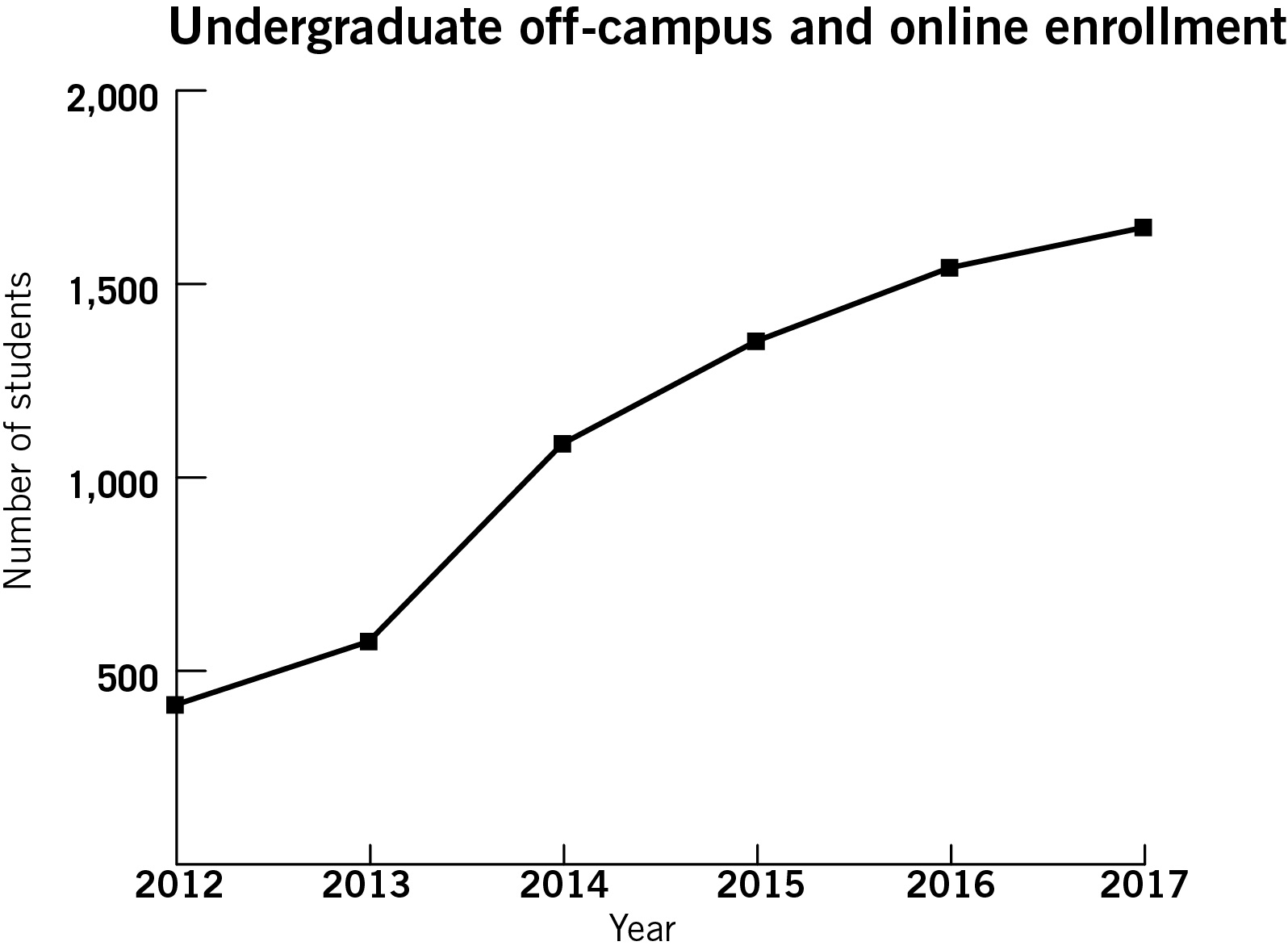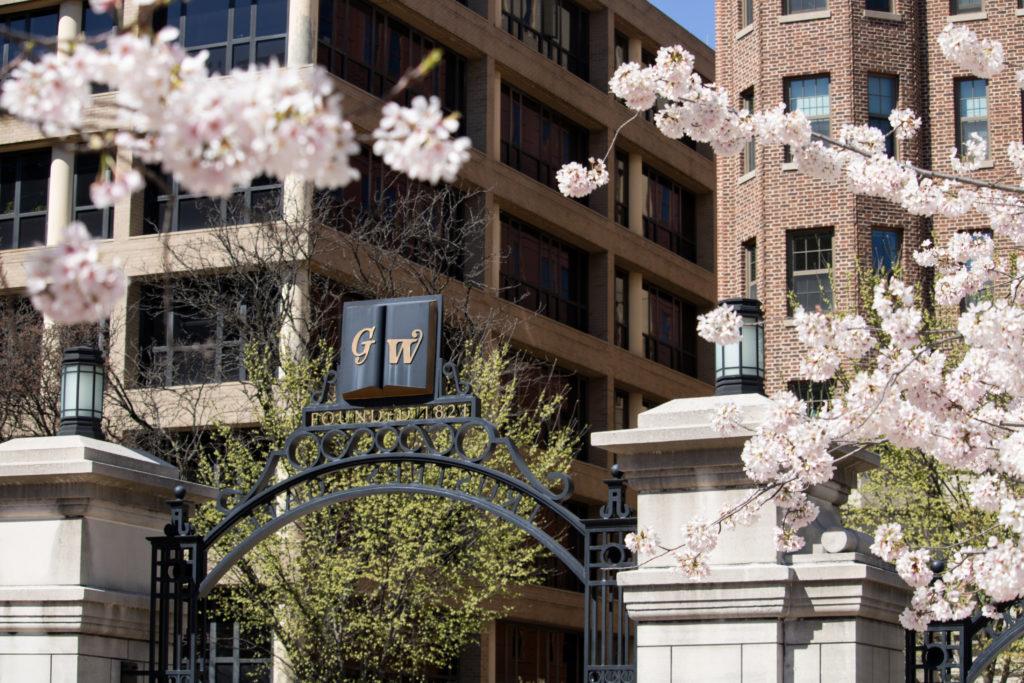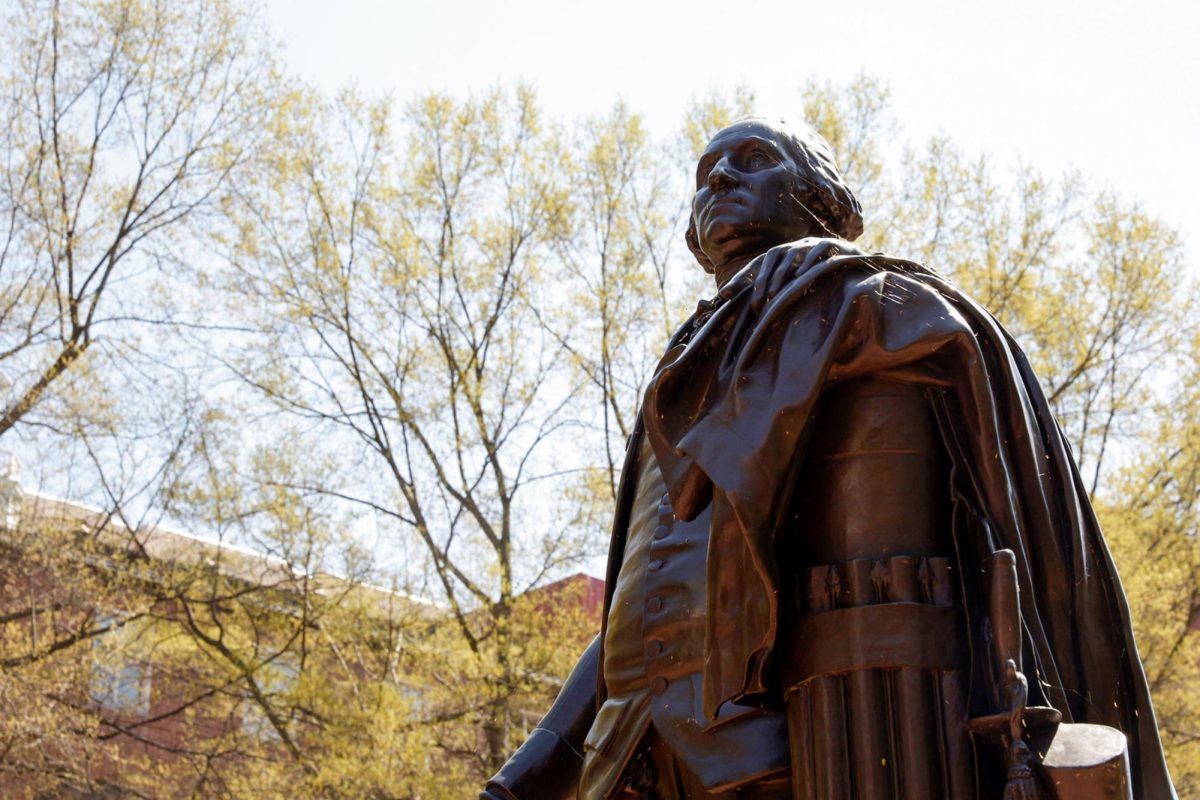Over the past six years, the number of undergraduate students enrolled in online or off-campus courses has ballooned by 300 percent – and officials are expecting that number to keep growing.
Last year, 1,646 undergraduates took online courses or enrolled in classes off-campus, including courses held in the Flagg Building and on the Virginia Science and Technology Campus – a leap from the 412 students enrolled in similar courses in 2012, according to institutional data. Provost Forrest Maltzman said that as the University enrolls more students, an on-campus cap will continue to push students online or outside of Foggy Bottom, and graduate students will be most affected by the shift.
But he said the move also makes the University more accessible to students who may not be able to take classes on campus, offering multiple options for both traditional and nontraditional students.
“It is critical that we offer flexibility in terms of how you can take a course,” he said. “It’s helping to provide access.”

Emily Recko | Graphics Editor
Source: Institutional data
This fall, the University is offering 183 off-campus and online courses, about the same as the 194 classes offered the year before, according to the schedule of classes.
Provost Forrest Maltzman said the uptick in off-campus enrollment is not surprising because a large portion of the increase is attributable to courses taken at the Corcoran School of the Arts and Design’s Flagg Building or the increasing popularity of the medical school’s online health sciences program.
GW acquired Corcoran in 2014 and merged the school with the Columbian College of Arts and Sciences last year.
He said even though off-campus enrollment has spiked for undergraduates – and it will likely continue to grow – officials are focusing most of their off-campus growth on graduate programs. Officials have rolled out a slew of new online graduate programs over the past year, including an electrical engineering master’s degree and a research-focused doctoral program in the School of Nursing.
The University faces a 16,553-student cap for on-campus enrollment, but if a student takes a class off-campus, either online or at off-campus centers, they do not count toward the cap, Maltzman said. The University enrolled almost to capacity for the Foggy Bottom Campus in 2016, forcing Maltzman to work with officials to expand off-campus and online course offerings.
Maltzman declined to say if the University aims to enroll more students on-campus or off-campus.
Higher education experts said the boost in off-campus enrollment demonstrates a nationwide trend of universities aiming to accommodate students that wouldn’t otherwise take classes on campus because of outside commitments, like full-time jobs.
Kevin McClure, a professor of higher education at the University of North Carolina-Wilmington, said students will take online courses so they can work through the content at a pace that makes sense to them.
“That flexibility can be really beneficial and it does give students the capability to avoid the expense of living near GW and still kind of enjoy some of the educational benefits,” he said.
Nearly one-third of undergraduate students enrolled in a distance education course and 13 percent of undergraduates enrolled solely in a distance education course in fall 2016, according to the National Center for Education Statistics.
Matthew Clifford, the associate dean of students at Wake Forest University, said off-campus enrollment allows universities to accommodate a more diverse range of students, like “non-traditional” students who are unable to attend classes on Foggy Bottom because of full-time jobs or D.C.’s living costs.
“What we’ve seen more frequently is institutions trying to think of different ways to provide education and really to broaden its reach and to expand its mission beyond a sort of brick-and-mortar institution,” Clifford said.





